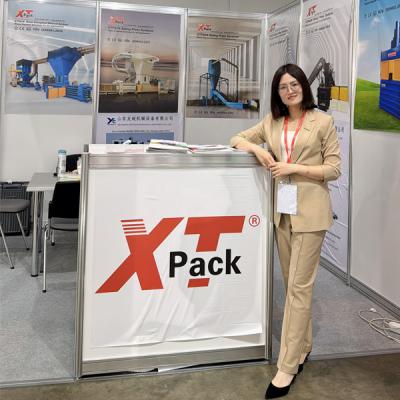In the realm of waste management, where efficiency and sustainability are paramount, the rubbish compress machine stands as a transformative solution. This innovative technology has the potential to reshape the way we handle and dispose of waste, offering a range of benefits that extend from reducing landfill space to optimizing waste collection. In this blog, we will explore the world of rubbish compress machines, delving into their mechanics, advantages, and their role in shaping a cleaner environment.
Introducing the Rubbish Compress Machine: A Game-Changer
The rubbish compress machine represents a leap forward in waste management practices. Its primary objective is to decrease the volume of waste materials through compaction, leading to numerous advantages in terms of space utilization, transportation efficiency, and environmental impact. This innovative technology presents a more organized and sustainable approach to dealing with waste.
Understanding How Rubbish Compress Machines Work
At the heart of a rubbish compress machine lies a sophisticated mechanism designed to exert pressure on waste materials. This pressure compacts the waste, significantly reducing its volume. The compressed waste is often formed into bales or blocks for ease of handling and transport. This process not only minimizes the space required for waste storage but also facilitates the logistics of waste disposal. Rubbish compress machines contribute to streamlining waste collection efforts. With compacted waste taking up less space, collection routes can be optimized, reducing fuel consumption and carbon emissions. This efficiency not only benefits waste management companies but also enhances the overall environmental footprint of waste disposal practices.
Advantages for a Greener Future
One of the most significant advantages of rubbish compress machines is their impact on landfills. By reducing the volume of waste, these machines extend the lifespan of landfills, delaying the need to establish new sites. This preservation of land resources is crucial for maintaining natural habitats and reducing the environmental impact of waste disposal. Compacted waste requires fewer trips for disposal, resulting in reduced transportation-related carbon emissions. The rubbish compress machine's role in optimizing waste collection routes contributes to cleaner air and a more sustainable waste management ecosystem.
Paving the Way for a Sustainable Tomorrow
The journey of rubbish compress machines is far from over. As technology advances, we can anticipate further refinements and integration of smart systems, enhancing the efficiency and effectiveness of these machines. The use of data analytics could optimize waste collection schedules and improve waste segregation practices, fostering a more resource-efficient approach. Rubbish compress machines have the potential to raise awareness about responsible waste disposal practices. The visual impact of waste being compacted into manageable units can encourage individuals and communities to take more mindful actions towards waste reduction and recycling.
The rubbish compress machine symbolizes the ongoing evolution of waste management towards a greener and more sustainable future. With their ability to reduce landfill pressure, lower transportation emissions, and promote responsible waste practices, these machines are instrumental in shaping cleaner communities and a healthier environment. As we continue to explore and invest in waste management innovations, rubbish compress machines stand as a testament to human ingenuity in creating a world where waste is no longer a burden but a resource.






_400x400.jpg)


